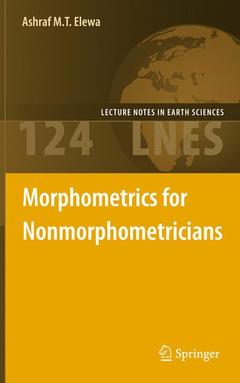Description
Morphometrics for Nonmorphometricians, 2010
Lecture Notes in Earth Sciences Series, Vol. 124
Coordinator: Elewa Ashraf M.T.
Language: English
Subjects for Morphometrics for Nonmorphometricians:
Publication date: 09-2012
367 p. · 15.5x23.5 cm · Paperback
Publication date: 06-2010
367 p. · 15.5x23.5 cm · Hardback
Description
/li>Contents
/li>Comment
/li>
Morphometrics is concerned with the study of variations and change in the form (size and shape) of organisms or objects adding a quantitative element to descriptions and thereby facilitating the comparison of different objects and organisms. This volume provides an introduction to morphometrics in a clear and simple way without recourse to complex mathematics and statistics. This introduction is followed by a series of case studies describing the variety of applications of morphometrics from paleontology and evolutionary ecology to archaeological artifacts analysis. This is followed by a presentation of future applications of morphometrics and state of the art software for analyzing and comparing shape.




